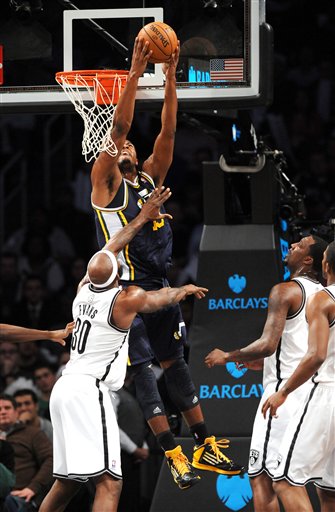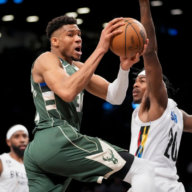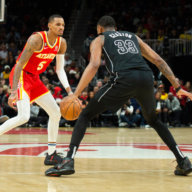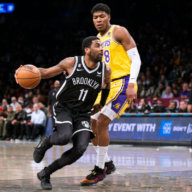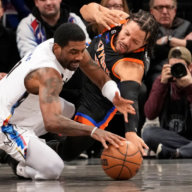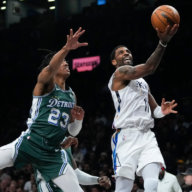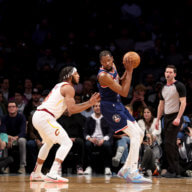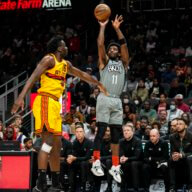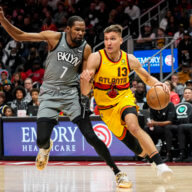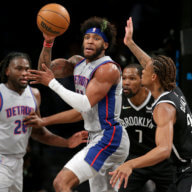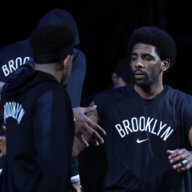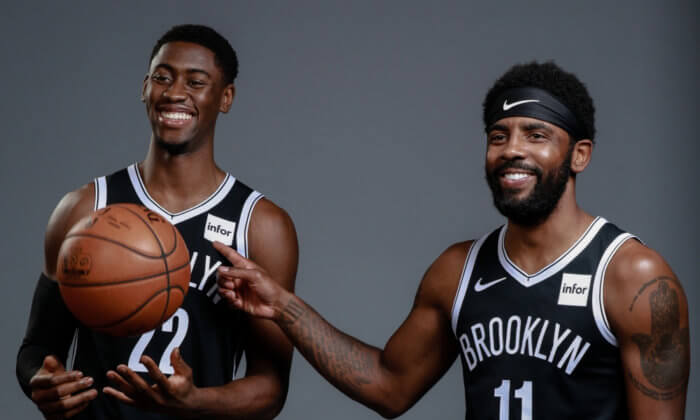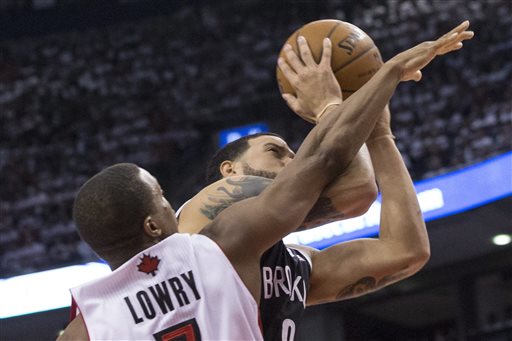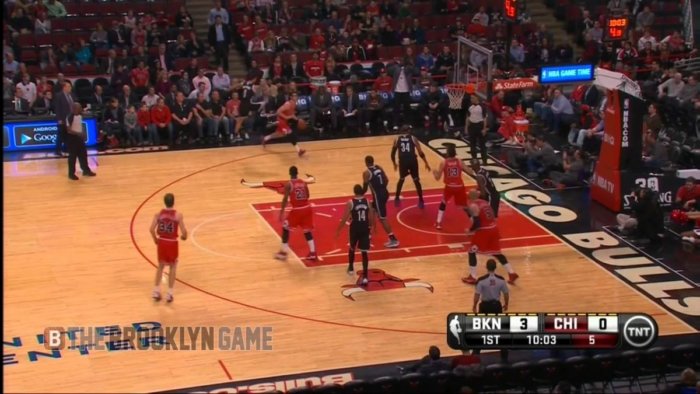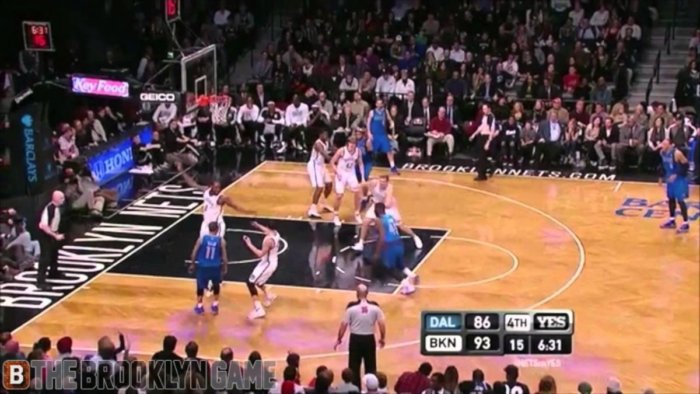 BROOKLYN, N.Y. — After 24 games, after the best 15-game start in franchise history, after a decade of rebuilding, a half-decade of building, and two seasons of rebranding, the Brooklyn Nets prolapsed to a wholly unimpressive 13-11 after losing yet another double-digit lead, another halftime lead, another lead at home, another lead to a team that they should have vanquished, this time a crushing 92-90 defeat to the Utah Jazz. It is the sixth time the Nets have blown a double-digit lead at home, and their eighth loss after leading at halftime.
BROOKLYN, N.Y. — After 24 games, after the best 15-game start in franchise history, after a decade of rebuilding, a half-decade of building, and two seasons of rebranding, the Brooklyn Nets prolapsed to a wholly unimpressive 13-11 after losing yet another double-digit lead, another halftime lead, another lead at home, another lead to a team that they should have vanquished, this time a crushing 92-90 defeat to the Utah Jazz. It is the sixth time the Nets have blown a double-digit lead at home, and their eighth loss after leading at halftime.
Even after blowing the 13-point halftime lead — acquired thanks to a buzzer-beating three-pointer from Gerald Wallace — and playing catch-up for most of the fourth quarter, the Nets had ample opportunity to turn this misfortune into a victorious positive. Down two with 14.5 seconds left, the Nets forced an Al Jefferson turnover with a hounding defensive effort.
Wallace — who came up with the ball — swung the rock to Deron, who swung it to Joe, who attacked the lane to no avail, found C.J. Watson in the corner, who found Wallace, one more time, for his second buzzer-beating three-point attempt of the night. It just didn’t fall. If you don’t consider that Wallace is only 3-16 on three-pointers from the left wing this season, it was an open, perfect look, one the Nets would gladly take again in a similar situation.
The missed Wallace shot may drop the Nets to 1-8 in the final ten seconds of games within one possession, but even with Wallace’s struggles, it’s hard to argue against the look. Truthfully, Brooklyn’s issues didn’t come in the waning moments, but much earlier, when the Nets yet again cemented their status as the worst third-quarter team in basketball, allowing the lead to evaporate with costly turnovers, a dearth of defensive rebounding, and a constant stream of fast-break points that continued throughout the half.
The crux of the Nets’ on-court issues lie with Williams, deracinated from Jerry Sloan’s flex that made him into a star, soilured by the Nets’ isolation-heavy offense. Williams’ criticism of the Brooklyn system has mounted in recent days, possibly as the team’s matchup with his former team loomed, possibly out of frustration with his poor shooting, or some other ethereal, random explanation. (Note: I refuse to believe it’s mere coincidence that Humphries, when praising Utah’s effort, made a specific mention about Utah’s “system”).
True to form, the Nets incorporated flex-like elements into their gameplan against Utah, and though it worked on the first possession — a backscreen on the baseline that gave Williams an open fifteen-footer in the corner, which he drained — Williams again struggled with even open shots all night, making just four of his remaining 11 field goal attempts, none outside of the paint. Two of his layups came on back-to-back isolation possessions in the fourth quarter, when Williams attacked the rim directly with a ferocity mostly unseen in a Nets uniform. In those brief possessions, gone was the hesitating, stop-on-a-dime drive-and-kick Williams, and entered the Williams we’ve been waiting for, one that attacked the rim with purpose and didn’t allow the defense to catch up with him. It was a wonderful, unfortunately flitting set of moments.
As Joe Johnson continues to find his touch, as Gerald Wallace exhibits his standardly unstoppable kinetic force, as Brook Lopez and Kris Humphries re-integrate themselves into the starting lineup, it is the singular star that the Nets have revolved around the last three seasons that appears nearest implosion at all times. Williams, as Ethan Sherwood Strauss noted yesterday, is shooting fewer shots at the rim than ever, and after last night’s debacle now stands at a paltry 31.9% outside of five feet this season.
The Nets worked for months promising an experience, and in the past nine games, have perfected an on-court mission to destroy it. Because while the Nets tout their palmary Flatbush Avenue arena, flush with fancified suites and $14 sandwiches, the team — you know, the reason people come to the arena — simply cannot find the rhythm its bottom line seems to nail with relative impunity.
No amount of in-game Modell’s advertisements or pumped-in crowd noise will save Deron Williams’ shot. The Marvel-concocted mascot, complete with terrifyingly masked smile and shoulder tassels that would embarrass the most open-minded sadomasochist, won’t turn close losses into moral victories. The time-out crowing at fans, imploring them that they want a t-shirt, won’t turn the roster into a top-10 defense.
This may be an oversimplification. The Nets were 11-4 not too long ago before Brook Lopez’s right foot decided the season was too boringly successful. They’re closer to that team than the 2-7 team they’ve been since. Their last three losses have all come within one possession; as heartwrenching as that may be, it beats getting blown out. But the fact remains: 24 games in, the Brooklyn Nets are good enough to be really good. At this point, they’re not.

